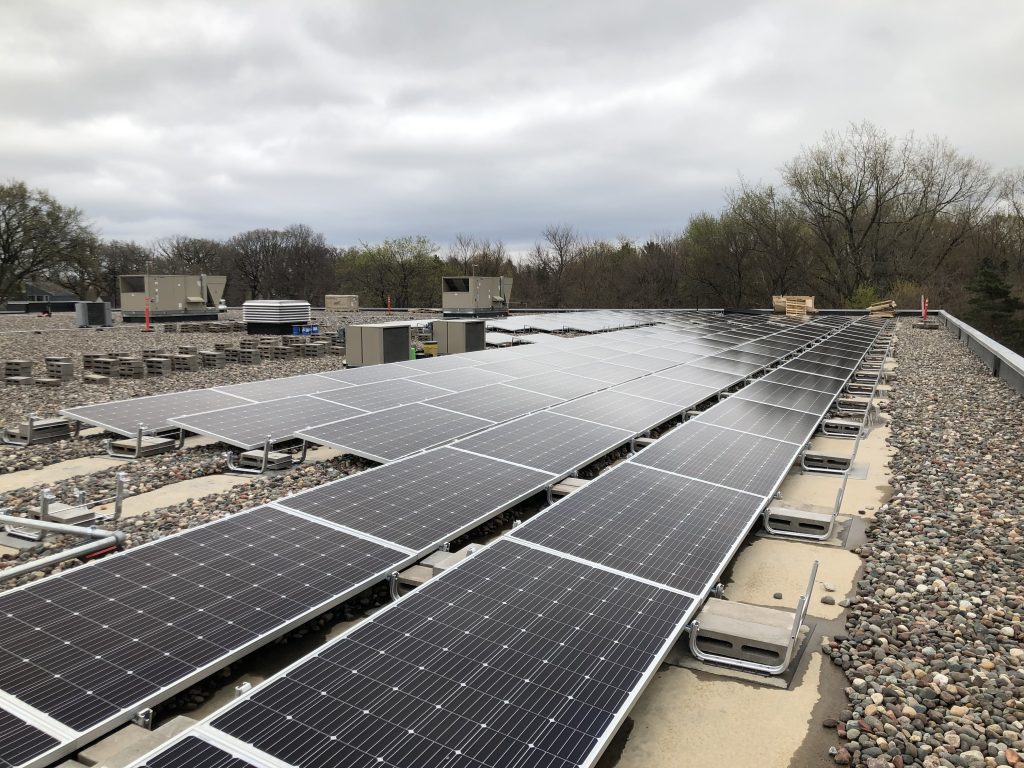Solar panels on JFCS’ new building help us go green

Noble Conservation Solutions donated solar panels to JFCS
In partnership with Noble Conservation Solutions, JFCS recently installed two solar systems as part of our commitment to incorporating health and environmental design elements to the Stillman Family Foundation Building. The solar PV systems add a sustainable “green” energy source to our energy supply, and save JFCS money.
Noble chose to donate the systems to JFCS. We have no cost for the systems and receive 20% of the value of the electricity that is produced for the first 13 years. Noble receives the rebates, tax incentives and partial value of the power produced to cover some of the costs of supplying and installing the solar systems. After 13 years, JFCS will become the owner of the solar systems and will then get the full financial benefits. The panels were installed this spring, and became operational in mid-June.
Larry Pepper, a former JFCS Boardmember and Business Development & Project Management for Noble Conservation Solutions, recently answered some questions about the solar panels:
How do the solar panels benefit both JFCS and the environment?
All of the electricity that is produced by the two solar arrays on the roof is used by JFCS. This reduces the amount of electricity that JFCS needs to buy and that Xcel Energy must generate with its coal, natural gas and nuclear plants. To not have to generate the energy in some far-off plant and then transmit it to your building has larger environmental and energy savings implications. Noble is honored to help JFCS be a steward of our environment and a leader by example in sustainability.
How much energy do the panels provide?
The panels produce a small percentage of the energy needed to run the JFCS building. The two systems produce a total of about 103,000 kilowatt hours of electricity each year. Over the first 20 years of the system, that will average about $9,500 of direct savings a year.
Do they work as well in the winter as summer?
The solar panels produce about 10-15% of their potential during our typical snowy winter due to clouds, sun angle and snow cover. The panels work very well in the cold, but the reduced sun and normal snow cover reduces the electricity generated in the winter. No one will go up and shovel off the panels in the winter. May through August is the peak time for maximum electricity production. The panels are oriented directly to the south and at an optimum angle for production and safety of the system.
Anything else you would like to add?
Myself and Lev Buslovich of Noble Conservation Solutions have long-time connections as supporters of JFCS. Noble installs solar PV systems on many for-profit and non-profit rooftops. JFCS Board member Jeremy Kalin provided important guidance to JFCS in the planning of this project. He has extensive professional experience working with solar energy and other environmental design initiatives.
For more information on Noble, visit www.noblecs.com.
